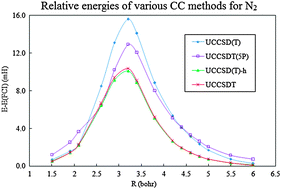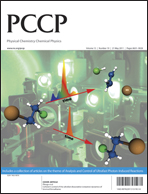New coupled cluster approaches based on the unrestricted Hartree–Fock reference for treating molecules with multireference character
Abstract
Here we review the basic formalism, implementation details, and performance of two newly developed coupled cluster (CC) methods based on the unrestricted Hartree–Fock (UHF) reference for treating molecules with multireference character. These two approaches can be considered to be approximations to the CC singles, doubles, and triples (CCSDT) method. The key concept of these two approaches is the corresponding orbitals, which are unitary transformations of canonical UHF molecular orbitals so that all spin orbitals are grouped into unique orbital pairs. In one approach called CCSDT(5P), a subset of triple excitations involving up to five-pair indices is included. In another approach called CCSD(T)-h, the contribution of connected triple excitations is treated in a hybrid way. With the concept of active corresponding orbitals, triple excitations can be automatically partitioned into two subsets, and the amplitudes of these two subsets are determined via solving different equations. Both CCSD(T)-h and CCSDT(5P) computationally scale as the seventh power of the system size. A survey of a number of applications demonstrates that CCSD(T)-h is an excellent approximation to the full CCSDT method, and CCSDT(5P) provides a good approximation to CCSDT for single-bond breaking processes. The overall performance of CCSDT(5P) is less accurate than that of CCSD(T)-h, but significantly better than that of the widely used CCSD(T).


 Please wait while we load your content...
Please wait while we load your content...